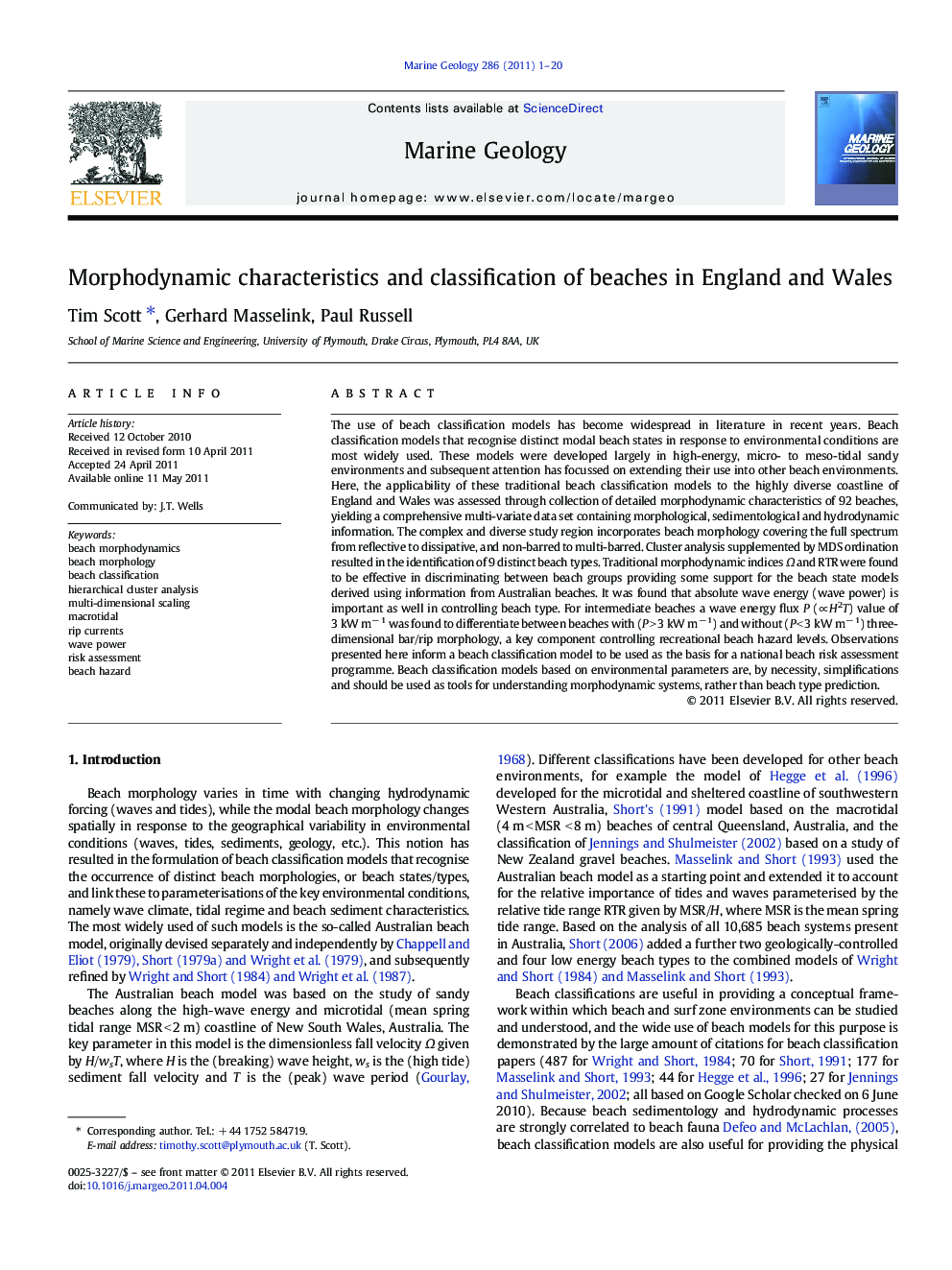| کد مقاله | کد نشریه | سال انتشار | مقاله انگلیسی | نسخه تمام متن |
|---|---|---|---|---|
| 4718665 | 1639134 | 2011 | 20 صفحه PDF | دانلود رایگان |

The use of beach classification models has become widespread in literature in recent years. Beach classification models that recognise distinct modal beach states in response to environmental conditions are most widely used. These models were developed largely in high-energy, micro- to meso-tidal sandy environments and subsequent attention has focussed on extending their use into other beach environments. Here, the applicability of these traditional beach classification models to the highly diverse coastline of England and Wales was assessed through collection of detailed morphodynamic characteristics of 92 beaches, yielding a comprehensive multi-variate data set containing morphological, sedimentological and hydrodynamic information. The complex and diverse study region incorporates beach morphology covering the full spectrum from reflective to dissipative, and non-barred to multi-barred. Cluster analysis supplemented by MDS ordination resulted in the identification of 9 distinct beach types. Traditional morphodynamic indices Ω and RTR were found to be effective in discriminating between beach groups providing some support for the beach state models derived using information from Australian beaches. It was found that absolute wave energy (wave power) is important as well in controlling beach type. For intermediate beaches a wave energy flux P (∝ H2T) value of 3 kW m− 1 was found to differentiate between beaches with (P > 3 kW m− 1) and without (P < 3 kW m− 1) three-dimensional bar/rip morphology, a key component controlling recreational beach hazard levels. Observations presented here inform a beach classification model to be used as the basis for a national beach risk assessment programme. Beach classification models based on environmental parameters are, by necessity, simplifications and should be used as tools for understanding morphodynamic systems, rather than beach type prediction.
Research highlights
► A new beach classification model for England and Wales is presented.
► The classification is based on detailed morphodynamic characteristics of 92 beaches.
► 9 beach types were identified using cluster analysis supplemented by MDS ordination.
► Ω, RTR and absolute wave energy proved effective in discriminating between groups.
► The classification becomes the basis for a national beach risk assessment programme.
Journal: Marine Geology - Volume 286, Issues 1–4, 1 August 2011, Pages 1–20